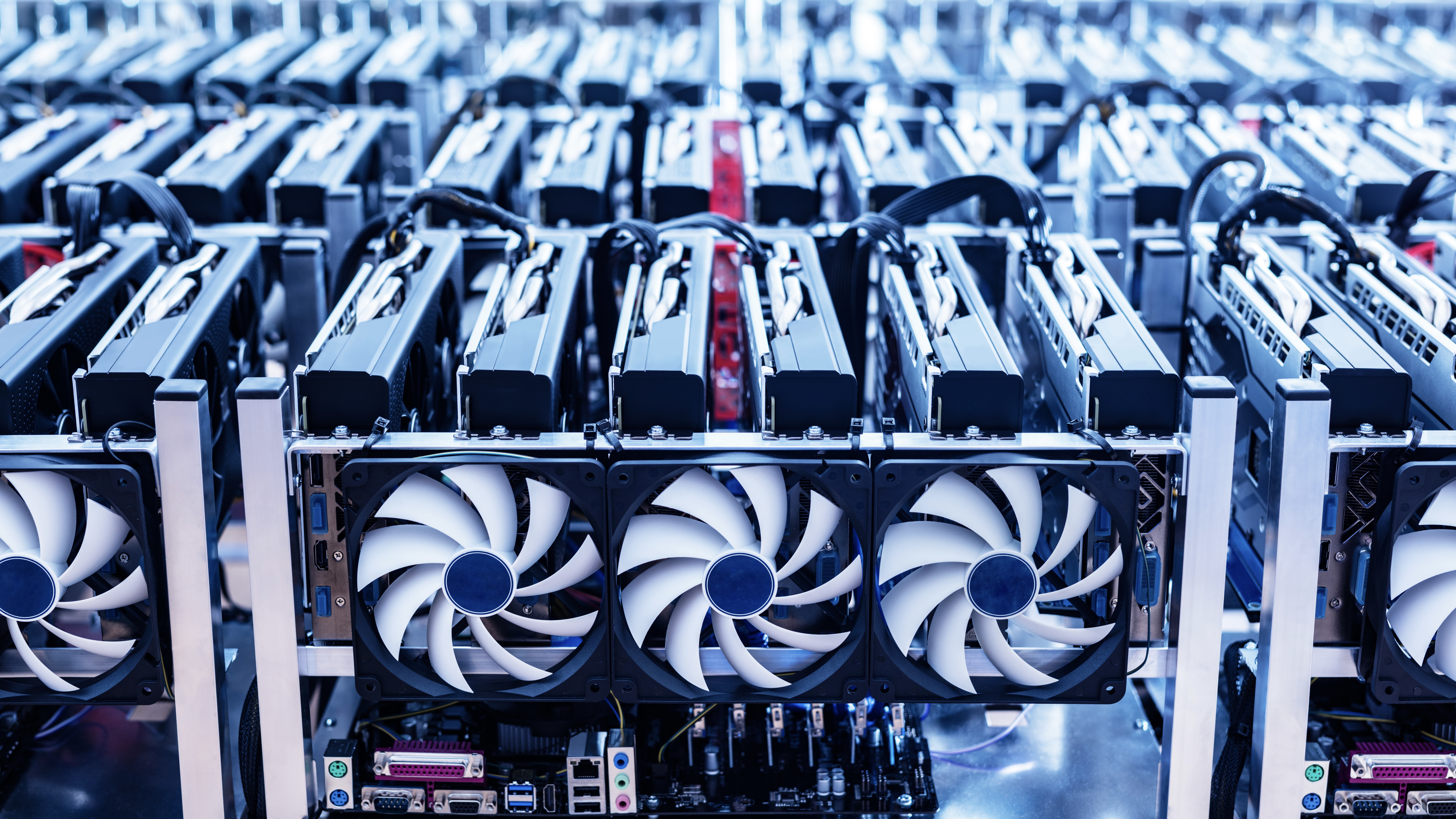Allowing crypto farms to continue running is madness
The latest cryptocurrency price crashes are the perfect reminder of why mining should grind to a halt

I don’t like cryptocurrencies, so it’s safe to say watching not just Bitcoin but a large bucket of other cryptocurrencies sustain a $9 billion crash in the late summer of 2022 ignited a frisson of schadenfreude. The implosion, part of the ongoing crypto winter, might have even forced formerly optimistic traders into wondering if this was the beginning of the end.
After a few minutes of prodding and poking at the less hysterical regions of the net, I had some actual answers. Perhaps the most useful is that the entire market – all cryptocurrencies added together – is broadly agreed to be around $1 trillion. That means the overall loss in that particular crash, which sounds impressive at $9 billion, is still less than 1% of its valuation. Most currencies go through shifts in valuation like this without all the accompanying brouhaha that seems to attend the world of crypto.
All the while, many people forget that all cryptocurrencies depend on a great deal of computing power, both to be mined and to be maintained from day to day. This is a colossal amount, in fact. We’ve all heard the anecdotes as Bitcoin has surpassed the electricity consumption of Holland or Argentina.
Now, the rules are changing as quickly as energy prices are rising. This is bound to have a continued impact on the rarefied world of the blockchain and crypto, which may be strange new entities to the world of finance, but which suck up the kilowatts just like any businesses old or new.
This brings me to a rule learnt as an old banker into the technological world, which is the value placed upon rarity. If you could just buy all the bitcoins you wanted, then the price would go up until sellers are motivated to release their holdings. So why does it seem that cryptocurrencies have to keep on being “minted”, at a time when their competition for our megawatts is, to say the least, unwelcome, verging on foolish? Wouldn’t a moratorium on cryptocurrency farming while we have an energy sector problem, make existing Bitcoin and other crypto holdings more valuable, not less?
RELATED RESOURCE

What bank CIOs must know when considering bank-specific cloud solutions
Giving banks a way to evaluate industry-specific clouds' value propositions
In a final irony, the strongest proof of the laws of economics as applied to rarity comes from the gold trade. Worldwide prices of gold are set every day in London, for everybody. This includes the Russians, who have enough gold in the ground to make it cheaper than brass, should they choose to get digging. If they understand the nature of rarity, then how come our crypto pioneers don’t, or want to see that rule overthrown, deposed, ignored?
This was exactly my thinking when I then read that Ethereum has essentially done exactly that. And not only has it placed a hold on minting new currency, but also hugely reduced the ongoing energy demands by switching to a new proof-of-stake concept that avoids the energy bill previously associated with any proof-of-work transaction.
Sign up today and you will receive a free copy of our Future Focus 2025 report - the leading guidance on AI, cybersecurity and other IT challenges as per 700+ senior executives
So, good for Ethereum. But I cannot see any rationale, as we venture yet further into this energy crisis, for allowing Bitcoin and other cryptocurrency farms to keep running.
-
 Google boasts that a single Gemini prompt uses roughly the same energy as a basic search – but that’s not painting the full picture
Google boasts that a single Gemini prompt uses roughly the same energy as a basic search – but that’s not painting the full pictureNews Google might claim that a single Gemini AI prompt consumes the same amount of energy as a basic search, but it's failing to paint the full picture on AI's environmental impact.
-
 Achieving business outcomes with generative AI
Achieving business outcomes with generative AIWebinar Take your hybrid cloud journey to the next level with generative AI
-
 Digital transformation in the era of AI drives interest in XaaS
Digital transformation in the era of AI drives interest in XaaSWhitepaper Driving the adoption of flexible consumption XaaS models
-
 Three steps to calculate total enterprise IT energy consumption using DCIM
Three steps to calculate total enterprise IT energy consumption using DCIMWhitepaper Energy Management Research Center
-
 Six steps to success with generative AI
Six steps to success with generative AIWhitepaper A practical guide for organizations to make their artificial intelligence vision a reality
-
 Maximize the value of generative AI for your organization
Maximize the value of generative AI for your organizationWhitepaper Harness generative AI's full potential
-
 How to grow your business with smarter decisions
How to grow your business with smarter decisionsWhitepaper Introducing changes that generate business growth in the face of economic uncertainty for a stronger, more cohesive future
-
 Clean energy: The customer-centric frontier for modern utilities
Clean energy: The customer-centric frontier for modern utilitiesWhitepaper Adopt new technologies to help drive clean energy adoption

